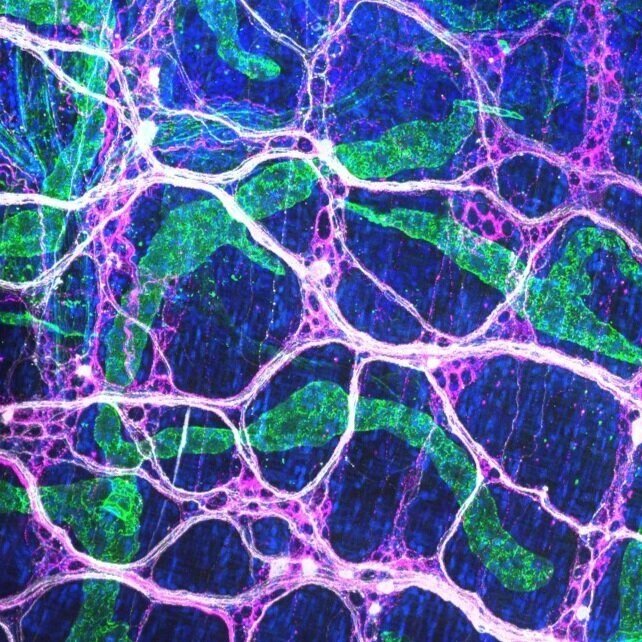Our Research
Development, function and dysfunction of somatosensory and viscerosensory circuits
Our lab studies the somatosensory and viscerosensory circuits that mediate our sense of touch and sensations from the gastrointestinal (GI) system, respectively. We are interested in how sensory experience, beginning with peripheral neurons, shapes the development of circuits in the spinal cord and brain. We also hope to understand how sensory input influences complex cognitive and social behaviors.
We have found that genetic mutations or alterations in peripheral sensory neuron function contribute to multiple symptoms observed in mouse models of autism spectrum disorder (ASD). The selective modulation of these neurons can improve ASD-related symptoms. Our research program combines genetics, anatomy, electrophysiology, imaging, transcriptomics and behavior in mice, as well as studies of human-derived neurons.
Development and function of somatosensory and viscerosensory circuits
A major research direction for our lab is to study the basic biology of neural circuits that detect and process sensory information from the skin. Our lab also studies the development and function of sensory neurons that innervate the internal organs, including the GI tract, and the neural circuits that process viscerosensory information. We are particularly interested in understanding how tactile input, beginning with peripheral sensory neurons, regulates brain development and influences perception and complex cognitive and social behaviors.
Altered somatosensory and viscerosensory processing in ASD
We also study how alterations in sensory circuits may contribute to different diseases and disorders. In particular, hypersensitivity to light touch and GI problems are remarkably common symptoms among people with autism spectrum disorder (ASD). We hypothesize that alterations in somatosensation and viscerosensation could be underlying causes of additional ASD symptoms, such as changes in social behaviors or anxiety. We recently identified that genetic mutations or alterations in peripheral sensory neuron function contribute to multiple symptoms observed in mouse models of ASD. We also found that the selective modulation of these peripheral neurons can improve some ASD-related symptoms in mice. In our current work, we study the mechanisms through which tactile and GI sensory abnormalities arise in animal models of ASD, and how sensory alterations may impact brain development and behavior.
Building better bridges between preclinical models and humans
Lastly, we aim to build better bridges between pre-clinical models and human physiology, using studies of human-derived induced pluripotent stem cells. We iterate between mouse models and human cells to identify cellular mechanisms of peripheral sensory neuron dysfunction in ASD. Through collaborations, we are identifying new biomarkers to better enable ASD diagnosis and developing novel therapeutic strategies to treat sensory abnormalities associated with ASD.




